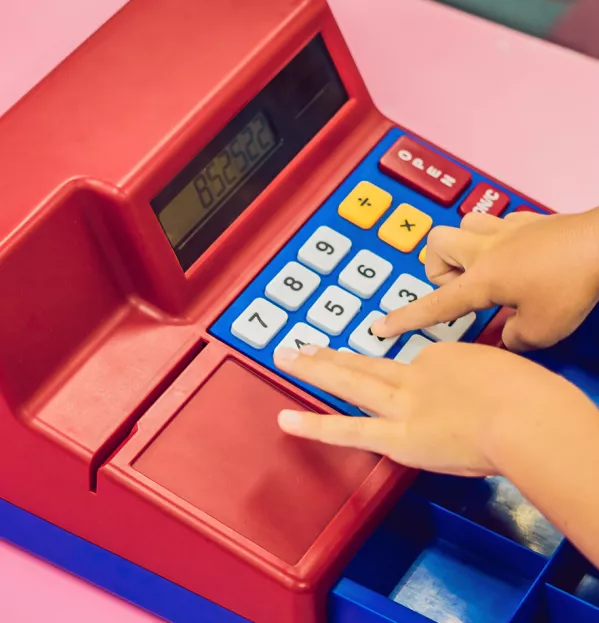- Home
- Teaching & Learning
- Early Years
- How to tackle the decline in children’s play skills
How to tackle the decline in children’s play skills

In every early years foundation stage classroom, there will be regular sessions of child-initiated learning, commonly referred to as “discovery time”, which all reception children seem to love. As teachers, we expect to see a great variety of creative, playful learning happening during this time; we want to witness problem-solving, collaborating, investigating and children using their imagination.
Recently, this hasn’t been the case: too often, I’ve walked into the garden and seen a group of boys playing “the dog game”. This really bothers me. Why? Well, it’s because a common example of the most basic level of play is a child being “the dog”: the game shows a lack of imagination and is a lower form of play and thinking.
This feeds into a worrying trend I’ve been witnessing: many of the children in school seem to be lacking in language skills, social skills and imagination. As a team, we’ve talked about children not having enough “spark” when we try to engage them and, throughout our setting, we are regularly seeing that “low-level” play.
More from Helen Pinnington:
- How to make tidying up effective and educational
- Rewards: should we get rid of stickers?
- Maths goals in the early years: what’s changed?
So why is this? The pandemic, clearly, has had a huge impact on children’s experiences prior to starting school, and it’s understandable that we are seeing this shift. Many of them have missed out on key experiences: playdates, visits, days in pre-school. For children who have been stuck at home, play has often been replaced with screens as parents feel the need for a convenient way of occupying them. Parents are honest as they confess to me: “I have to put YouTube on for him because I need to work”.
This really, really matters: low-level play is linked to lower attainment in children. Children need to be challenged in play and, overall, we should see more sophisticated play skills and strong characteristics of effective learning towards the end of their time in EYFS. This, we know, is linked to higher levels of thinking and cognition.
As a setting, then, how can you assess what is low-level play, and what is more sophisticated? This is tricky: some teachers might not always agree on what constitutes “low-level” play: I have disagreed, for example, with a colleague who felt that the children’s play was low-level because they weren’t choosing to play with magnetic letters or numbers.
For me, it’s not about the resources that they choose but rather seeing the learning and levels of engagement: I have seen children demonstrating some fantastic maths without a magnetic number in sight.
Although it is tough to define: within my team, we agree that, generally, low-level play is where children are engaged in a repetitive play scenario day after day that does not appear to progress. Play behaviours typical of children of a much younger age is another sign, as it is play that appears passive. If you noticed that communication is lacking between peers in these scenarios, it can also be an indicator.
The key to addressing this is through observational assessment: careful observation of the children gives us a rich and detailed picture of what a child can do, knows and understands. The more experienced and skilled your EYFS team is, the more likely they are to tune into this issue and know how to respond.
Once you’ve identified occurrences of low-level play, what should you do next?
The first step should be to discuss what low-level play is as a team, and raise awareness so that everyone is able to make a note of how the children are playing and to think about how they might respond to support the children.
Next, take the time to identify the reasons behind the low-level play: do children lack experience with stories, language, ideas for play? This helps to decide what sort of modelling and scaffolding the children might need.
Then, introduce a daily group time in which children can spend a few minutes thinking about what they plan to do before discovery time begins and to bounce ideas: here, try to incorporate a review so that children can evaluate their projects.
And make sure you remember to regularly review the learning environment. Ask yourself: are we offering the right resources to really engage the children? Are they open-ended? Do they offer the right level of challenge?
Following these steps should help you to ensure the children in your setting progress with their play skills.
Helen Pinnington is early years foundation lead at St Thomas More’s Catholic Primary School in Bedhampton, Hampshire
You need a Tes subscription to read this article
Subscribe now to read this article and get other subscriber-only content:
- Unlimited access to all Tes magazine content
- Exclusive subscriber-only stories
- Award-winning email newsletters
Already a subscriber? Log in
You need a subscription to read this article
Subscribe now to read this article and get other subscriber-only content, including:
- Unlimited access to all Tes magazine content
- Exclusive subscriber-only stories
- Award-winning email newsletters
topics in this article



